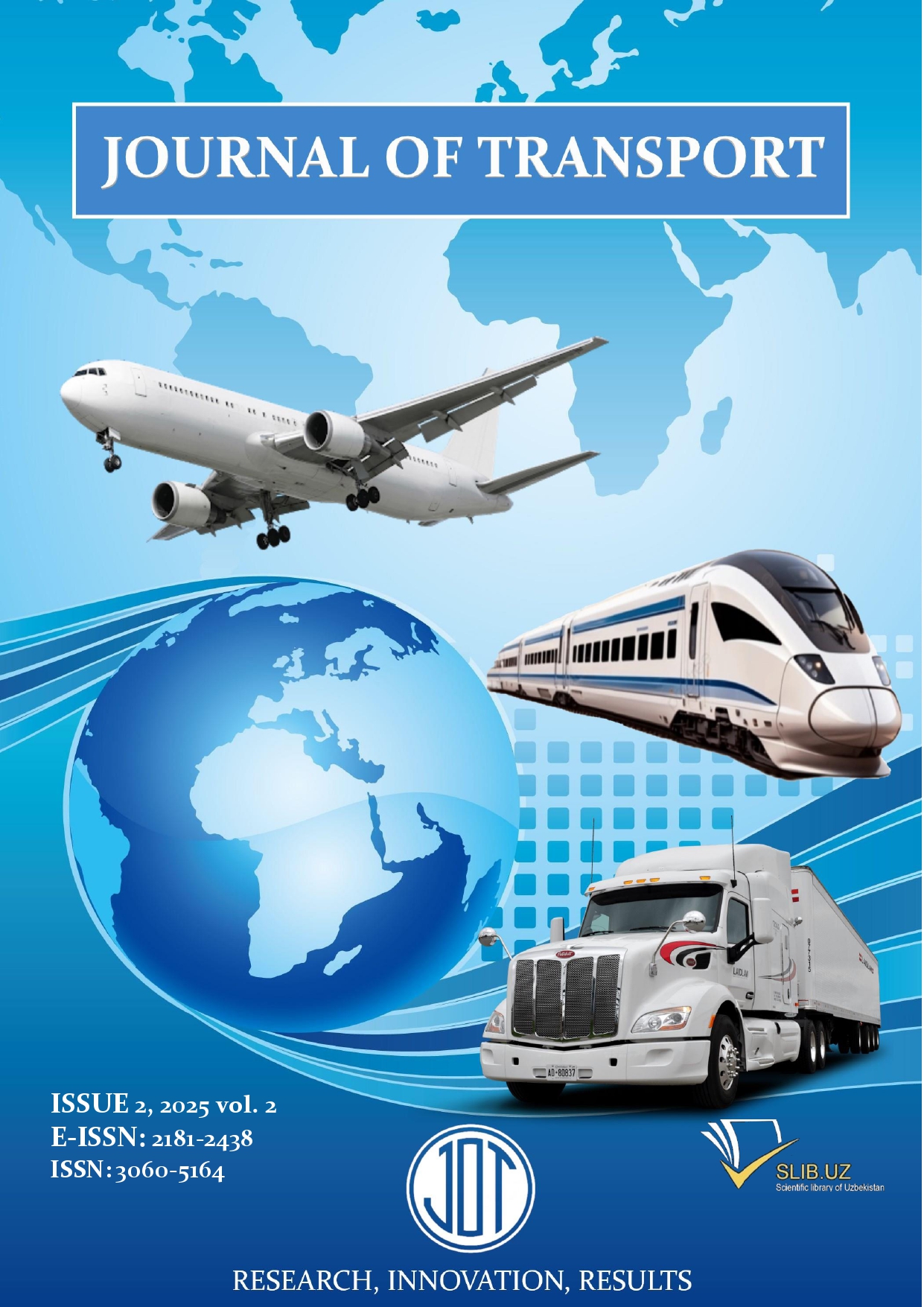Modeling of automatic control of routes on the train dispatcher plot
Abstract
This scientific article considers the methods of automatic preparation of routes at the train dispatcher's station. Currently, on the sections where trains are moving, using the high qualification of the train dispatcher and his experience in solving this problem, train routes are prepared at the stations by calculating the train schedule, that is, determining the crossing and overtaking stations. This process is modeled using a Petri net.
The process of creating routes is modeled by checking the conditions for stopping trains at the stations where they are moving. When preparing the route, the state of signaling, centralization and blocking devices, and the preparation times of train routes are taken into account. Based on the results of the calculation, the train is allowed or prohibited to leave the station. In order to send a train from the station, there should be no obstacles on the arrival of the train at the receiving station.
References
[2] Болтаев С.Т. Определение моментов времени своевременного приготовления маршрутов высокоскоростных поездов на станциях линий смешанного движения / С.Т. Болтаев // Вестник Ростовский университет путей сообщения. – 2017. – № 2. – С. 45-50.
[3] Muhiddinov O.O. Dispetcherlik boshqaruvdagi oraliq stansiyalarda marshrutlarni avtomatik sozlash. Транспортда ресурс тежамкор технологиялар, - Тошкент: ТДТУ, 2021. – С. 368-373.
[4] Болтаев С.Т., Муҳиддинов О.O., Хокимжонов М.Ю (2023). “Ўзбекистон темир йўллари” АЖ таркибидаги диспетчерлик марказлаштириш тизимларининг таҳлили. Транспортда ресурс тежамкор технологиялар, - Тошкент: ТДТУ, 2021. – С. 368-373.
[5] Muhiddinov, O., & Boltayev, S. (2023). Route management modeling of high-speed trains on the train dispatcher section. In E3S Web of Conferences (Vol. 376). EDP Sciences. https://doi.org/10.1051/e3sconf/202337604033.
[6] Болтаев С.Т. Особенности кодирования автоматической локомотивной сигнализации при вводе смешанного высокоскоростного движения на станциях // Интеллектуальные системы на транспорте: Материалы V МНПК «ИнтеллектТранс-2015», СПб., 2015, с. 373-379.
[7] Никитин А.Б., Болтаев С.Т., Глыбовский А.М. Особенности реализации функций электрической централизации для высокоскоростных поездов на линиях смешанного движения / А.Б. Никитин, С.Т. Болтаев, А.М. Глыбовский // Известия Петербургского университета путей сообщения. – 2016. – № 2. – С. 215-228.
[8] Никитин А.Б., Болтаев С.Т. Оценка состояния инфраструктуры железнодорожной автоматики и телемеханики Узбекистана для введения высокоскоростного движения / А.Б. Никитин, С.Т. Болтаев // Автоматика на транспорте. – 2015. – Том 1, № 3. –С. 51-70.
[9] Болтаев С.Т. Оптимизация затрат в системах интервального регулирования на малодеятельных железных линиях / М.Н. Василенко, В.В. Сапожников, А.Б. Никитин, А.Д. Манаков, С.Т. Болтаев, И.В. Кушпиль // Перспективы будущего в образовательном процессе: сборник тезисов Национальной научно-технической конференции. – СПб.: ФГБОУ ВО ПГУПС, 2016, с. 27-30.
[10] Aripov, N., Sadikov, A., & Ubaydullayev, S. (2021). Intelligent signal detectors with random moment of appearance in rail lines monitoring systems. E3S Web of Conferences, 264.
[11] Yıldırım, U., Durmus, M. S., & Söylemez, M. T. (2009). Fail-Safe Signalization and Interlocking Design for a Railway Yard: An Automation Petri Net Approach. Intelligent and Manufacturing Systems (IMS), 2010 7th International Symposium On, (Ims), 12–16. Retrieved from http://www.researchgate.net/publication/228994654_Fail-Safe_Signalization_and_Interlocking_Design_for_a_Railway_Yard_An_Automation_Petri_Net_Approach/file/3deec52020664dbab1.pdf
[12] Malakar, B., & Roy, B. K. (2015). Railway fail-safe signalization and interlocking design based on automation Petri Net. In 2014 International Conference on Information Communication and Embedded Systems, ICICES 2014. Institute of Electrical and Electronics Engineers Inc. https://doi.org/10.1109/ICICES.2014.7034154
[13] Sadikov, A., Aripov, N., Yusupov, Z., & Vaisov, O. (2024). Intelligent Processing Time Characteristics of the Flow of the Impulse Component of the Train Shunt Resistance. Lecture Notes in Networks and Systems, 912 LNNS.





